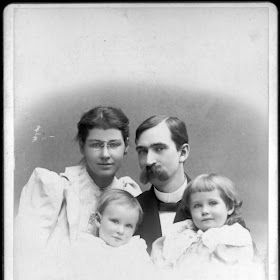I have come to know a few of these old shutterbugs from a hundred years ago
By Rob Carrigan, robcarrigan1@gmail.comHistory can be cold and sterile or it can offer warmth and understanding. It can be very personal at times. A few years ago, I attended a very interesting program introducing a new book about Estemere Mansion, by my friend Dan Edwards and the owner of the house, Roger Ward.
Edwards and Ward had a book signing when they finished the book a few years ago at Tri-Lakes Center for the Arts in Palmer Lake for “A Victorian Mansion in the Colorado Rockies: The Estemere Estate at Palmer Lake.” These two take history personally, and I recommend the book and DVD, just from that perspective.
Though my thought today developed from that presentation, it is not necessarily about the mansion.
In that context, Ward described, in great detail how they relied on a photograph taken in 1893 of Estemere to restore the property during the past decade. The photo revealed mysteries about lions at the steps of the house, the stained glass in the windows, even the light on the porch, and lightning rods on the gables.
The photo was taken by one H.S. (Horace Swartley) Poley.
As some of you know, or have guessed, I have great love for old photos. And in cases, I feel like I have come to know a few of these old shutterbugs from a hundred years ago, or at least their style and work. It is a fascinating bit of time travel for me. I have, of course, seen Poley's stuff before.
He has a famous and exhaustive set of photos of the bull fights in Gillett in 1895. He completed fabulous work in his decades of documenting Southwestern archeology and Native American culture. His train and railroad photography rivals giants of the period, such as William Henry Jackson, Robert Richardson, and Otto Perry.
But who is this character?
I can only give you what I know today. Perhaps, as is the way with digging in the history pile, I will know more tomorrow.
"Horace Swartley Poley created a major collection of photographic images of Native Americans in the southwestern United States. Born in Norristown, Pennsylvania in 1864, Poley moved to Colorado in the 1880s and was a resident of Colorado Springs for sixty-two years. Poley started a commercial photo studio in 1892 and remained an active photographer until 1935. In addition to his photographic work, Poley served as head of the U.S. Postal registry department in Colorado Springs. During summer vacations, Poley served as photographer with archaeological expeditions in Arizona, New Mexico, Utah, and southwest Colorado. He recorded landscapes, cityscapes, and events in the Pikes Peak region of Colorado. Poley was noted for his travelogue lectures employing his images in "magic lantern" shows," from Genealogy.com.
The Denver Public Library obtained the Poley collection in 1937.
But how about a photo of the photographer? What was he like? And his family? Let's try to personalize this.
Well, I got lucky and found the above photo with the following information.
Studio bust portrait of the Poley family. Margret Ferguson Poley has short bangs and wears a pince nez, a blouse and jacket with puffed sleeves and ruffled lace collar with a flower or heart charm. Frank Ferguson Poley has short hair and wears a shirt with probably a wide starched collar, Horace Swartley Poley has a mustache and wears a bow tie and jacket over a shirt with a straight, starched collar. Elizabeth Poley Schrader has short bangs and wears a dress with puffed sleeves and wide laced collar.
Margret Ferguson Poley, Frank Ferguson Poley, Horace Swartley Poley, Eliszabeth Schader and "about 1893" inked on verso.
I feel like I know the fellow a little better, even though it has been more than 100 years.
###

No comments:
Post a Comment